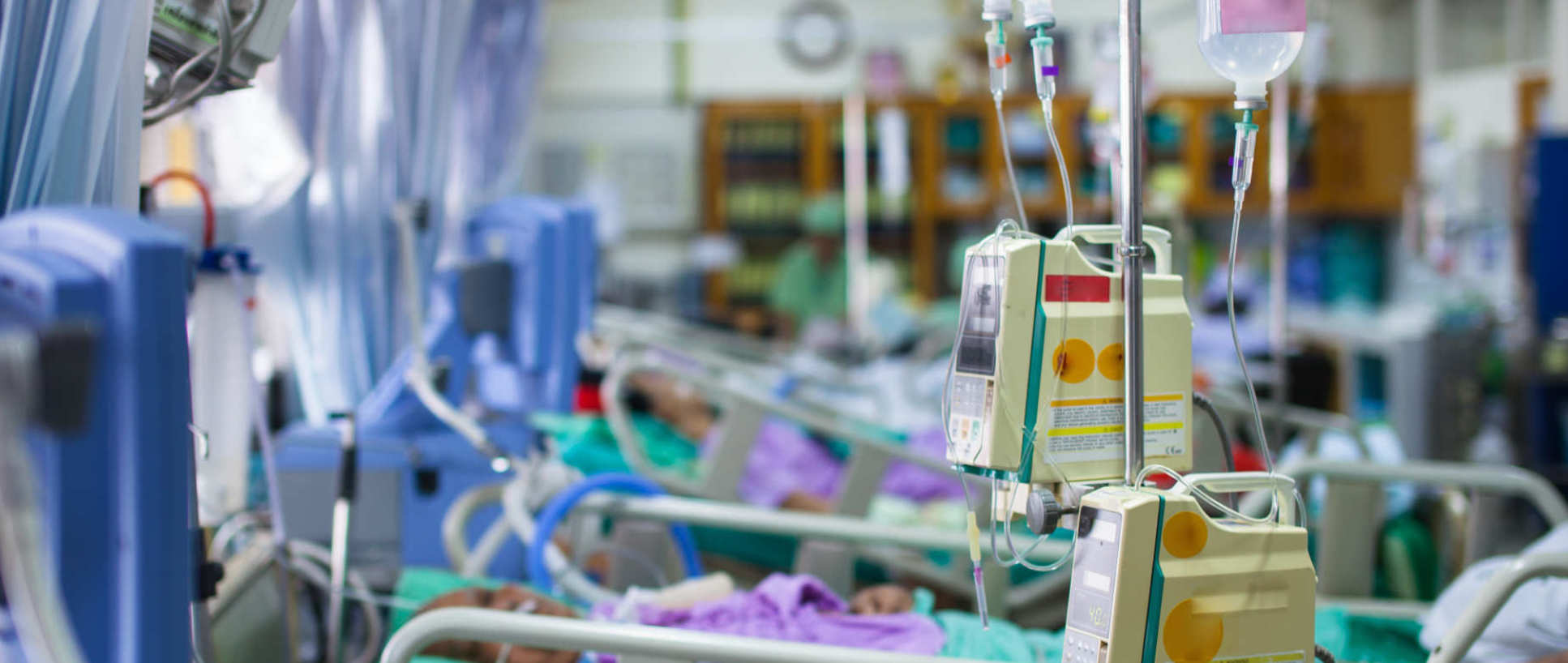 Critical care involves the care of the sickest patients in the hospital. Critically ill patients have usually been through a significant insult to their body (such as trauma, infection, burn) and have developed organ failure and require life-support. Critical Care is the largest theme bringing together clinicians and scientists from diverse backgrounds and includes collaborative research from hospitals throughout north-west London. Investigations range from evaluating biological mechanisms of organ failure through to the development of innovative technologies which allow the short-term and long-term support and recovery of organs.
Critical care involves the care of the sickest patients in the hospital. Critically ill patients have usually been through a significant insult to their body (such as trauma, infection, burn) and have developed organ failure and require life-support. Critical Care is the largest theme bringing together clinicians and scientists from diverse backgrounds and includes collaborative research from hospitals throughout north-west London. Investigations range from evaluating biological mechanisms of organ failure through to the development of innovative technologies which allow the short-term and long-term support and recovery of organs.
Many people are exposed to the environment of an Intensive care unit (ICU) either personally or through a family member. It is often a life-changing event and our work aims to reduce this impact facilitating post-ICU recovery.
Research themes:
- Acute Respiratory Distress Syndrome (ARDS)
- Burn injury
- Extracorporeal life support
- Functional outcomes and health service research
- Sepsis
Results
- Showing results for:
- Reset all filters
Search results
-
Journal articleO'Dea KP, Wilson MR, Dokpesi JO, et al., 2009,
Mobilization and Margination of Bone Marrow Gr-1<SUP>high</SUP> Monocytes during Subclinical Endotoxemia Predisposes the Lungs toward Acute Injury
, JOURNAL OF IMMUNOLOGY, Vol: 182, Pages: 1155-1166, ISSN: 0022-1767- Cite
- Citations: 62
-
Conference paperFletcher M, Takata M, Marczin N, 2008,
INHIBITORS OF GLUTATHIONE-S-TRANSFERASE INDUCE CELL DEATH IN LUNG EPITHELIAL CELLS
, Winter Meeting of the British-Thoracic-Society, Publisher: B M J PUBLISHING GROUP, Pages: A144-A144, ISSN: 0040-6376 -
Journal articleRippon HJ, Lane S, Qin M, et al., 2008,
Embryonic stem cells as a source of pulmonary epithelium in vitro and in vivo.
, Proc Am Thorac Soc, Vol: 5, Pages: 717-722, ISSN: 1546-3222Embryonic stem cells (ESCs) derived from the preimplantation blastocyst are pluripotent and capable of indefinite expansion in vitro. As such, they present a cell source to derive a potentially inexhaustible supply of pulmonary cells and tissue. ESC-derived pulmonary epithelium could be used for in vitro cell or tissue models or, in the future, implanted into the damaged or diseased lung to effect repair. Efforts to date have largely focused on obtaining distal lung epithelial phenotypes from ESCs, notably alveolar epithelium. Several disparate methods have been developed to enhance differentiation of ESCs into pulmonary epithelial lineages; these are broadly based on recapitulating developmental signaling events, mimicking the physical environment, or forcibly reprogramming the ESC nucleus. Early findings of our preclinical experiments implanting differentiated ESCs into the injured lung are also described here. Future efforts will focus on maximizing ESC differentiation efficiency and yield of the target phenotype, as well as characterizing the function of derived cells in vivo and in vitro.
-
Conference paperPinhu L, Wilson M, Takata M, et al., 2007,
Cyclo-oxygenase-2 induction by cyclic mechanical strain in human primary alveolar type 2 cells and in murine whole lung is dependent on activation of erk1/2
, Winter Meeting of the British-Thoracic-Society, Publisher: B M J PUBLISHING GROUP, Pages: A60-A61, ISSN: 0040-6376- Author Web Link
- Cite
- Citations: 1
-
Journal articleWilson MR, Goddard ME, O'Dea KP, et al., 2007,
Differential roles of p55 and p75 tumor necrosis factor receptors on stretch-induced pulmonary edema in mice
, AMERICAN JOURNAL OF PHYSIOLOGY-LUNG CELLULAR AND MOLECULAR PHYSIOLOGY, Vol: 293, Pages: L60-L68, ISSN: 1040-0605- Author Web Link
- Cite
- Citations: 58
-
Journal articleVizcaychipi MP, Burt C, Burnstein R, 2007,
Pulmonary embolism: An Unusual Cause Of Acute Liver Failure
, The Internet Journal of Emergency and Intensive Care Medicine™ ISSN: 1092-4051, Vol: 10Pulmonary embolism is still a challenging diagnosis and a very high index of suspicion is required. Symptoms and signs of acute right heart failure are still non-specific and often vary according to the precipitating condition. In this particular case, evolving liver failure and severe coagulation disorder as the initial presentation made the management of this patient very challenging and several causes of sudden decompensated liver failure were ruled out. Acute reduction of splanchnic flow was considered but in the context of relative good oxygenation and no history or clinical signs of deep venous thrombosis, the diagnosis of pulmonary embolism was not considered as a primary cause of liver failure and evolving multiple organ failure. Complementary studies, namely echocardiogram and use of a pulmonary artery catheter immediately raised the suspicion of a saddle pulmonary embolus. In view of the findings, an emergency contrast-enhanced spiral computed tomography was performed and the diagnosis of pulmonary embolism was made.
-
Journal articleTatham KC, 2006,
Reduce morbidity by balancing your fluids.
, British Journal of Hospital Medicine, Vol: 4 -
Journal articleGordon AC, Waheed U, Hansen TK, et al., 2006,
Mannose-binding lectin polymorphisms in severe sepsis: Relationship to levels, incidence, and outcome
, SHOCK, Vol: 25, Pages: 88-93, ISSN: 1073-2322- Author Web Link
- Cite
- Citations: 77
-
Journal articleO'Dea KP, Young AJ, Yamamoto H, et al., 2005,
Lung-marginated monocytes modulate pulmonary microvascular injury during early endotoxemia.
-
Journal articleUlrich K, Stern M, Goddard ME, et al., 2005,
Keratinocyte growth factor therapy in murine oleic acid-induced acute lung injury
, AMERICAN JOURNAL OF PHYSIOLOGY-LUNG CELLULAR AND MOLECULAR PHYSIOLOGY, Vol: 288, Pages: L1179-L1192, ISSN: 1040-0605- Cite
- Citations: 48
This data is extracted from the Web of Science and reproduced under a licence from Thomson Reuters. You may not copy or re-distribute this data in whole or in part without the written consent of the Science business of Thomson Reuters.